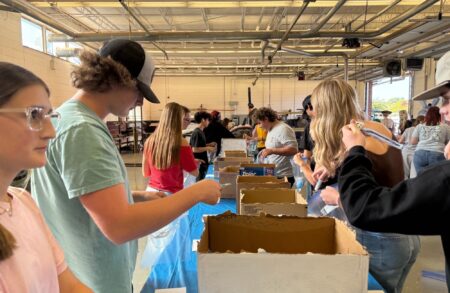According to local agronomists, corn and soybean harvest is nearing completion across Illinois, though conditions and yields remain mixed as farmers wrap up a long, weather-challenged growing season.
Nationally, a Reuters poll of analysts put the U.S. soybean harvest at 84% complete and the corn harvest at 72% finished. Looking back at the 2024 season, as of Oct. 27, 2024, 87% of corn was harvested and 90% of soybeans had been harvested, versus five-year averages of 73% and 80%, respectively.
Corn Harvest
“Corn harvest slowed a bit this week as everyone went after beans,” said Phil Krieg, an agronomy service representative for Syngenta Crop Protection who supports southern Illinois. “Overall, we’re likely 75–80% complete with corn.”
Ryan Gentle, Wyffels agronomy manager supporting most of the west half of Illinois, reported harvest nearing completion as well.
“Corn harvest is 90% or more completed,” he said. “There are some reports of down corn and deteriorating stalks where it hasn’t been harvested.”
Progress varies by geography in the southern region of the state — the northern and far southern parts of the region are further along, while the central corridor still has a long way to go, Krieg shared.
Yields have been highly variable, particularly in later-planted fields. Krieg said some of the late-June planted corn is still testing in the low 30% moisture range.
“Those yields look to be some of the lowest of the year and will likely require a lot of drying,” he said.
Soybean Harvest
Soybean harvest is now complete in Gentle’s area, and yields were good, he said.
“Green stems and low moisture were the biggest issues,” Gentle shared.
In Krieg’s territory, soybean harvest moved quickly after last weekend’s rain, aided by strong winds from Oct. 20–22 that rapidly dried fields.
“Growers got back into soybeans on Tuesday, Oct. 21, and we’re likely around 85% complete now,” Krieg said. “They’ve been able to start cutting double-crop soybeans as well as full-season fields.”
However, soybean yields have disappointed many growers.
“The late-season drought brought yields down 10–20 bushels per acre from expected and historical levels across the area,” Krieg explains.
On poorer soils, yields have been as low as 25–30 bushels per acre.
The most significant rainfall in nearly three months arrived Oct. 18, bringing a widespread 1.5–5 inches across the region. Krieg reported the soil soaked it up with very little runoff, and strong winds afterward helped growers resume harvest quickly. Still, wheat planting is running behind recent years.
“Low prices and dry conditions before last weekend’s rain have slowed planting,” he said. “But stands of planted wheat should be good following that moisture.”


:max_bytes(150000):strip_icc()/52513708671_2a6075fabe_o-dcd59efb1faf4c40afb3d8f39629aa7d.jpg)
:max_bytes(150000):strip_icc()/JaceYoung-ee4a04deb5fe4fbfa816744f027fcda5.jpg)



:max_bytes(150000):strip_icc()/52490323187_ed7fcd294b_o-cbed03c9c4ba49eaa2185fff95c667b3.jpg)
:max_bytes(150000):strip_icc()/pumpkins-_-cami-koons-2048x1545-b706ebeeace44615adaef29ad2c99f39.jpg)
:max_bytes(150000):strip_icc()/1-89ea904b07704f62a53279adb3db52b3.jpg)

